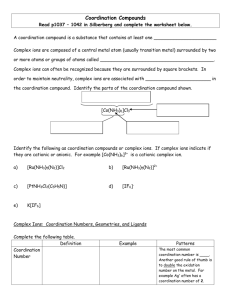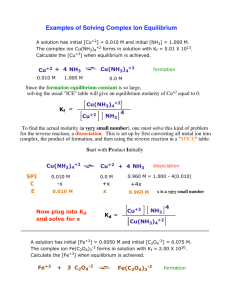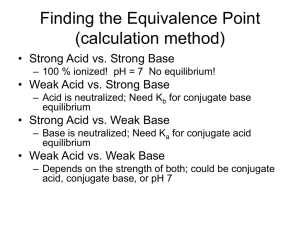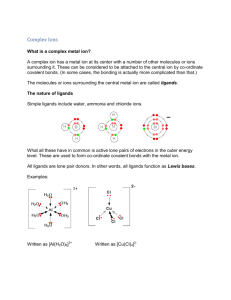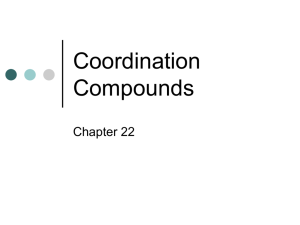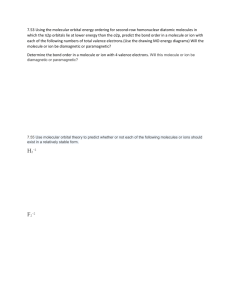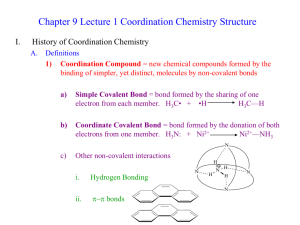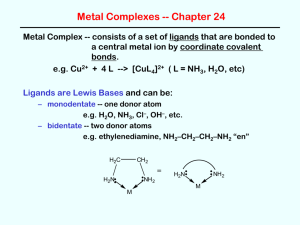metal-ions-complexes
advertisement
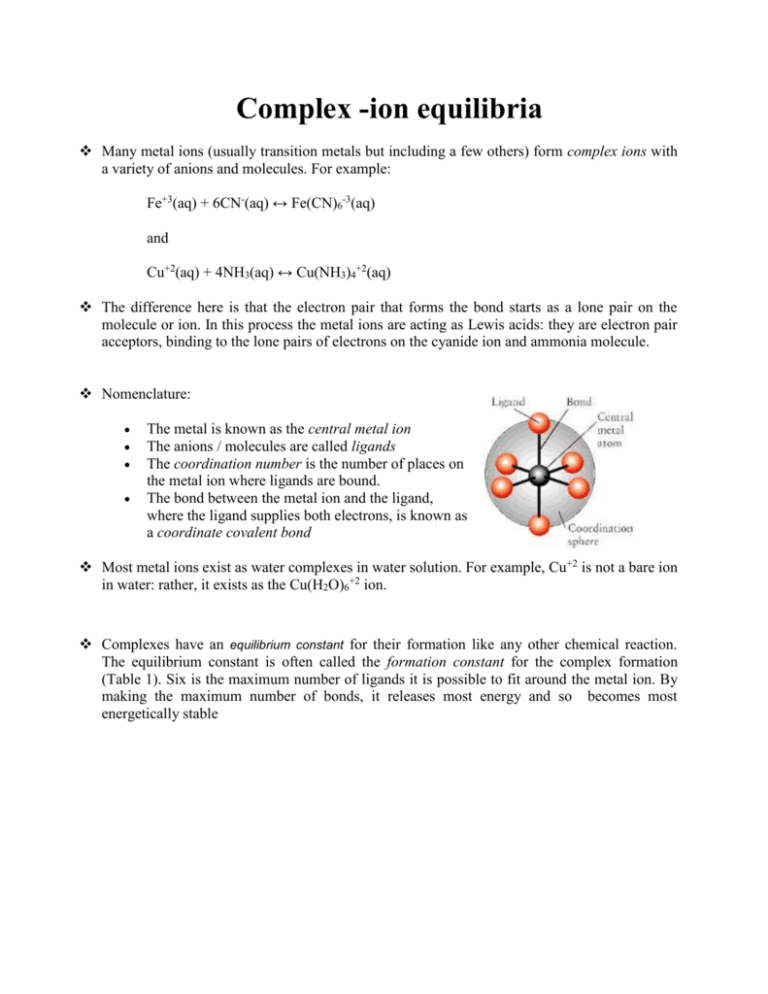
Complex -ion equilibria Many metal ions (usually transition metals but including a few others) form complex ions with a variety of anions and molecules. For example: Fe+3(aq) + 6CN-(aq) ↔ Fe(CN)6-3(aq) and Cu+2(aq) + 4NH3(aq) ↔ Cu(NH3)4+2(aq) The difference here is that the electron pair that forms the bond starts as a lone pair on the molecule or ion. In this process the metal ions are acting as Lewis acids: they are electron pair acceptors, binding to the lone pairs of electrons on the cyanide ion and ammonia molecule. Nomenclature: The metal is known as the central metal ion The anions / molecules are called ligands The coordination number is the number of places on the metal ion where ligands are bound. The bond between the metal ion and the ligand, where the ligand supplies both electrons, is known as a coordinate covalent bond Most metal ions exist as water complexes in water solution. For example, Cu+2 is not a bare ion in water: rather, it exists as the Cu(H2O)6+2 ion. Complexes have an equilibrium constant for their formation like any other chemical reaction. The equilibrium constant is often called the formation constant for the complex formation (Table 1). Six is the maximum number of ligands it is possible to fit around the metal ion. By making the maximum number of bonds, it releases most energy and so becomes most energetically stable The Stepwise Formation of Complex Ions When a transition-metal ion binds Lewis bases to form a coordination complex, or complex ion, typically it picks up these ligands one at a time. The Ag+ ion, for example, combines with NH3 in a two-step reaction. It first picks up one NH3 molecule to form a one-coordinate complex. Ag+(aq) + NH3(aq) Ag(NH3)+(aq) This intermediate then picks up a second NH3 molecule in a separate step. Ag(NH3)+(aq) + NH3(aq) Ag(NH3)2+(aq) It is possible to write equilibrium constant expressions for each step in these complex-ion formation reactions. The equilibrium constants for these reactions are known as complexformation equilibrium constants, Kf. The equilibrium constant expressions for the two steps in the formation of the Ag(NH3)2+ complex ion are written as follows. Most of the complexes of transition metals are colored and they adopt wide variety structural types. For instance, see Fig.2. Copper(II) chloride dissociates in aqueous solution to give the blue color of [Cu(H2O)6]2+ and yellow or red color of the halide complexes of the formula [CuCl2+x]x-. Concentrated solutions of CuCl2 appear green because of the combination of these various chromophores. The color of the dilute solution depends on temperature, being green around 100 °C and blue at room temperature. When Copper(II) chloride burns, it emits a green-blue color. Few additional examples of the complexes with ammonia are shown below:
